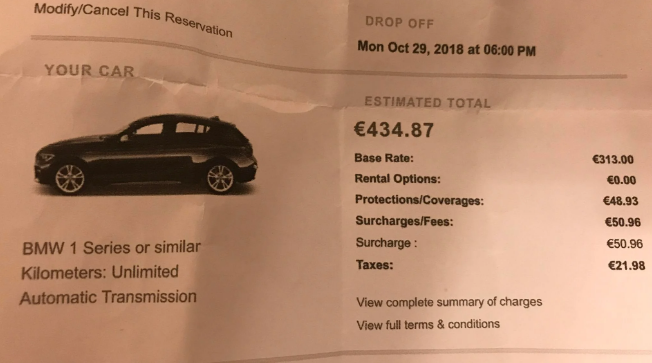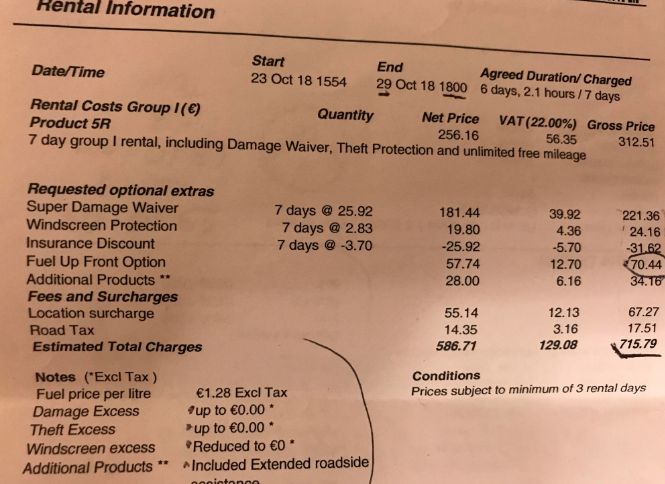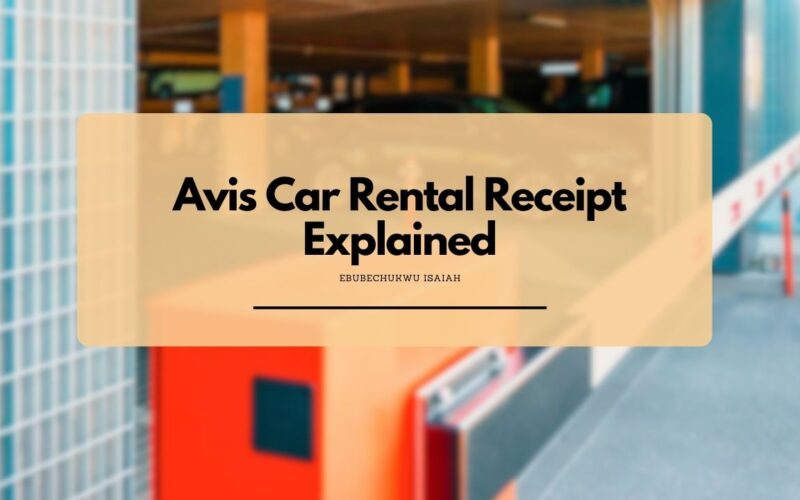As an Amazon Associate, I earn a small commission from qualifying purchases. Learn more about this.
There’s nothing like the feeling of a good road trip, but sometimes, looking at your Avis receipt afterward can put a damper on the memories.
What are all these charges, right? I’ve found myself pondering the same question.
In this post, we’ll walk through them together.
Overview of How Avis Receipt Works
Car rental receipts, at their core, serve as a comprehensive record of the transaction between you and the rental company, Avis in this case.
From the moment you pick up the keys to your rental, a contract activates, detailing everything from the agreed rental period to the type of car you’re driving away with.
But here’s the thing: this contract isn’t just for keeping track of the car; it’s also tracking the financial side of things – the part that most of us really care about.
First up, when you rent a car, you don’t get the actual receipt right away. Makes sense, right? Because how would they know upfront if you’ll add more miles than planned or, let’s say, return the car with an empty tank?
Avis, like most rental companies, calculates the final costs when you return the car. That’s when they hand over that detailed receipt.
Now, you might receive an initial receipt if you’ve made an online booking or an advanced payment.
Consider this a summary or confirmation of your reservation, not the final transaction. It outlines the expected cost, based on the information you provided (like how long you’ll rent the car and any extras you’ve chosen). But remember, this isn’t the final word on costs.
The real deal comes at the end of your rental period. Once you return the car, Avis checks for things like additional mileage, fuel levels, and late return fees, if applicable.
They tally up any extra charges that weren’t part of the initial estimate. Then, voila! They hand you the final receipt – a complete rundown of every charge incurred during your rental.
It’s also worth mentioning that there could also be intermediary receipts.
This is applicable where there are ongoing costs during the rental period (such as extending the rental period or adding services like GPS or child seats), or if you’re renting under a long-term contract.
These receipts document additional charges a renter might want to add during the rental period.
Now, let’s lay a visual illustration of what these receipts look like;
Here’s what a summary or confirmation receipt (the receipt that covers the basic estimation total of your rental booking) looks like:

Here’s what an intermediary receipt (the receipt that covers rental price estimation + addons) on Avis looks like:

On this receipt, you can boldly notice the extra charges as a result of the “requested optional extras” made by the renter.
And finally, here is what a return receipt (the receipt you get when your rental experience has been fully evaluated and the actual receipt you’re to pay) looks like…

18 Common Fees on Avis Rental Receipt and the Reasons Behind them
- Rate Charge: This is the big one, the base fee that depends on how long you’re renting the car, the car model, and sometimes the location. It’s calculated per day, and the total is simply the daily rate times the number of rental days. No surprises here!
- Mileage Charge: Some rental agreements come with unlimited miles, but others allot a certain number of miles per day or per rental. If you go over, there’s a mileage charge, calculated by multiplying the extra miles you drove by a set per-mile rate.
- Fuel Charges: Ah, the infamous fuel charge. If you return the car with less gas than when you started, you’ll see this fee on your receipt. It’s usually more expensive than regular gas prices, so I always try to refuel before returning the car.
- Late Return Fee: This one’s straightforward – if you return the car later than agreed, you might be charged an additional fee. Sometimes it’s a daily rate; other times, it could be hourly.
- One-Way Fee: Planning to drop off the car at a different location from where you picked it up? That convenience comes with a fee, my friend. It covers the cost of getting the car back to its original location.
- Young Driver Fee: Under 25? You might have noticed an extra fee on your receipt. This is because statistics show younger drivers are more accident-prone, so companies like Avis charge a bit more to cover that risk.
- Additional Driver Fee: If you’re sharing the driving responsibility with someone else, you’ll often pay an extra daily fee for that second driver. Why? More drivers, more risk – at least, that’s how the rental companies see it.
- Airport Surcharge: Picked your car up from the airport? You’ve probably seen this fee. Airports charge rental companies high fees to operate there, and guess what? Those costs trickle down to us, the customers.
- Equipment Rental: Needed a GPS or a child car seat? Those come with additional daily fees. They’re optional, of course, but they add up!
- Roadside Assistance: This optional service gives you peace of mind with 24/7 support in case of a breakdown, locked-in keys, or a flat tire. Opt-in, and you’ll see an extra daily charge on your receipt.
- Loss Damage Waiver (LDW): This isn’t traditional car insurance but rather an agreement that limits your financial responsibility if the rental car is damaged or stolen. This waiver, while optional, can be a daily charge that many opt into for peace of mind.
- Sales Tax and VAT: Last but not least, the tax man cometh. The sales tax is what the government requires, and the value-added tax (VAT) is common in many countries outside the US. These are calculated as a percentage of your total rental cost.
- Frequent Traveler Surcharge: If you’re earning frequent flyer miles or hotel points with your car rental, here’s something you might have missed. Avis, like other companies, often applies a ‘Frequent Traveler Surcharge.’ This small daily fee is essentially what you pay to earn those points or miles. It’s a way for Avis to recover part of the cost they incur when they award these points to you. So, when you see this on your receipt, it’s tied to those travel rewards you’re accumulating.
- Premium Location Surcharge: Ever noticed an extra charge when you rent from an airport or a location in the heart of the city? That’s the ‘Premium Location Surcharge.’ Due to higher rental demand and operational costs in premium spots like airports, train stations, or downtown locations, Avis charges a bit more. This surcharge is a percentage of your total rental cost, varying depending on the location’s specifics.
- Energy Recovery Fee: This one often flies under the radar! The ‘Energy Recovery Fee’ is a small daily charge that helps Avis cover the costs of its efforts in energy efficiency, like investing in energy-saving technologies or complying with environmental regulations. While it’s not a huge amount, it’s Avis’s way of offsetting some of the environmental impacts of running a fleet of rental vehicles.
- Vehicle Licensing Fee: Now, this fee is something Avis doesn’t pocket. The ‘Vehicle Licensing Fee’ or ‘Road Tax’ is a pass-through fee that recovers the costs imposed by states or municipalities for vehicle registration and licensing. It’s not something Avis controls, but it’s part of the deal when renting a vehicle.
- Administration/Processing Fee: Ever had a traffic violation or paid for your rental with cash? You might have encountered the ‘Administration’ or ‘Processing Fee.’ These fees cover the administrative costs (like processing traffic fines or handling cash transactions) that Avis incurs beyond the usual service. They’re not daily charges but are tied to specific administrative actions connected to your rental.
- Concession Recovery Fee: This one’s a bit tricky. The concession recovery fee is what rental car companies pay to the airport in exchange for being located there. And guess what? This fee is often passed down to you, the customer. It’s always good to be aware of this when picking up a car from an airport location.
Conclusion
Understanding your Avis car rental receipt can significantly enhance your rental experience and prevent unpleasant surprises. I’ve learned it’s always best to familiarize yourself with these terms and charges to know exactly what you’re signing up for. The road is so much more enjoyable when you’re cruising without a worry, don’t you agree?







